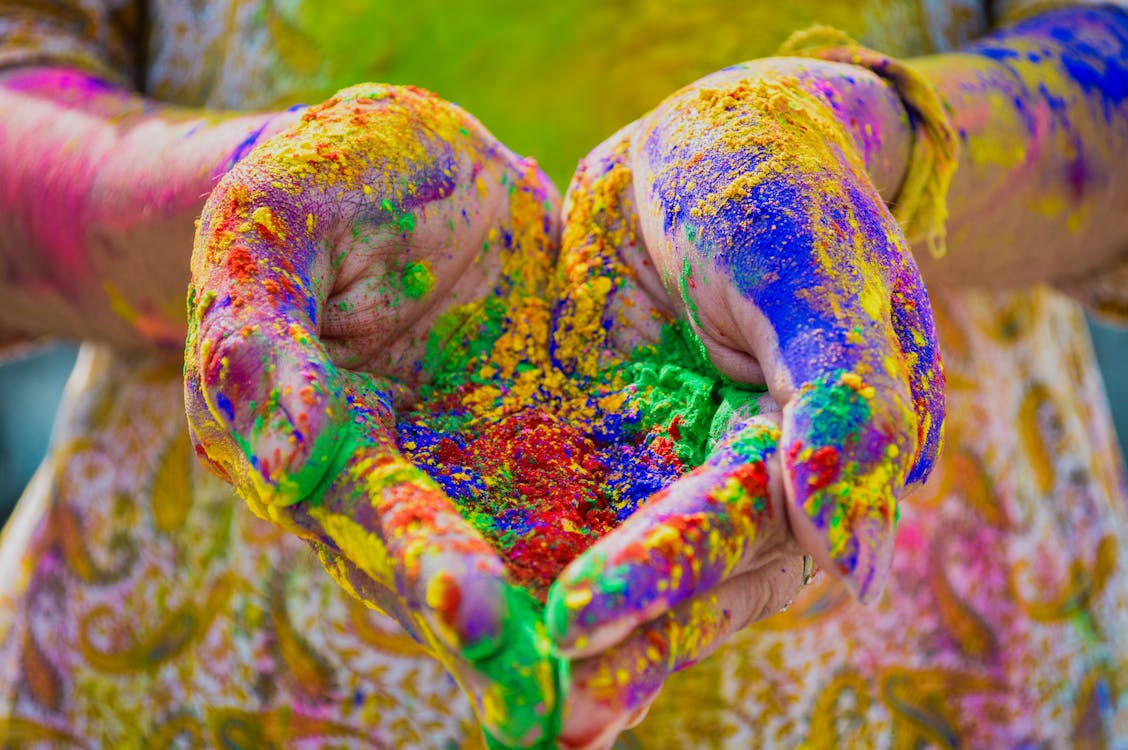Celebrating Holi: The Vibrant Festival of Colors
Holi, known as the Festival of Colors, is a joyous and vibrant celebration that holds a special place in the hearts of millions around the world. This ancient Hindu festival, celebrated predominantly in India and Nepal, marks the arrival of spring and the triumph of good over evil. With its kaleidoscope of colors, joyful spirit, and rich cultural significance, Holi is a time for friends and families to come together in love and merriment.

The Origins of Holi
Rooted in Hindu mythology, Holi commemorates various legends, the most popular being the tale of Prahlad and Holika. Prahlad, a devoted follower of Lord Vishnu, was the son of the malevolent King Hiranyakashipu. Despite his father's wishes, Prahlad continued to worship Vishnu, angering the king. In a bid to eliminate his son, Hiranyakashipu enlisted the help of his sister, Holika, who was blessed with immunity to fire.

Holika lured Prahlad into a pyre, intending to burn him alive. However, her plan backfired as Prahlad's unwavering faith shielded him, while Holika perished in the flames. This victory of devotion over malevolence is celebrated as Holi, with the ritualistic bonfire known as 'Holika Dahan' symbolizing the triumph of good over evil.
The Festivities Unleashed
The main event of Holi is a spectacle of color and camaraderie. On the day after Holika Dahan, streets across India transform into a riot of hues as people of all ages take to the outdoors armed with colored powders and water-filled balloons known as "water balloons." Faces smeared with vibrant hues, laughter filling the air, and the spirit of unity—these are the hallmarks of Holi celebrations.

Friends and strangers alike come together to drench each other in colors, sharing sweets and spreading goodwill. It's a time to let go of inhibitions, bridge gaps, and mend relationships. The playful ambiance of Holi transcends social barriers, bringing people from diverse backgrounds onto a common, colorful platform of joy.
Symbolism in Every Shade
Beyond its exuberant surface, Holi holds deeper cultural and social significance. The myriad colors used during the festivities represent the diverse hues of life itself. They symbolize the advent of spring, a season of new beginnings, fertility, and the blossoming of love. Moreover, the festival underscores the importance of forgiveness and the triumph of love and unity over hatred and discord.
Holi Beyond India
In recent years, Holi has gained popularity beyond the borders of India and Nepal. Its message of inclusivity and joyous celebration has resonated with people worldwide, leading to Holi-inspired events in various countries. From color runs to community gatherings, the essence of Holi—a celebration of life, love, and togetherness—has found a global audience.
A Colorful Celebration of Life

In essence, Holi is much more than just a festival of colors—it's a celebration of life itself. It embodies the spirit of unity, love, and the triumph of good over evil. As friends and families come together to revel in its colorful splendor, Holi transcends cultural boundaries, spreading joy and camaraderie.
So, whether you find yourself amidst the vibrant streets of India or partaking in a Holi-inspired event halfway across the globe, let the colors of this festival paint your life with happiness, love, and a sense of togetherness.
Happy Holi!
In this article, we've explored the origins, traditions, and significance of Holi, the Festival of Colors. From its ancient roots in Hindu mythology to its modern-day celebrations, Holi continues to be a cherished occasion that brings people together in joyous revelry. Whether you're participating in a local event or learning about this vibrant festival from afar, Holi's message of love, unity, and the triumph of good over evil resonates across cultures and borders.

 Cricket Score Counter
Cricket Score Counter Heads or Tails
Heads or Tails
You have not logged in, please Login to comment.